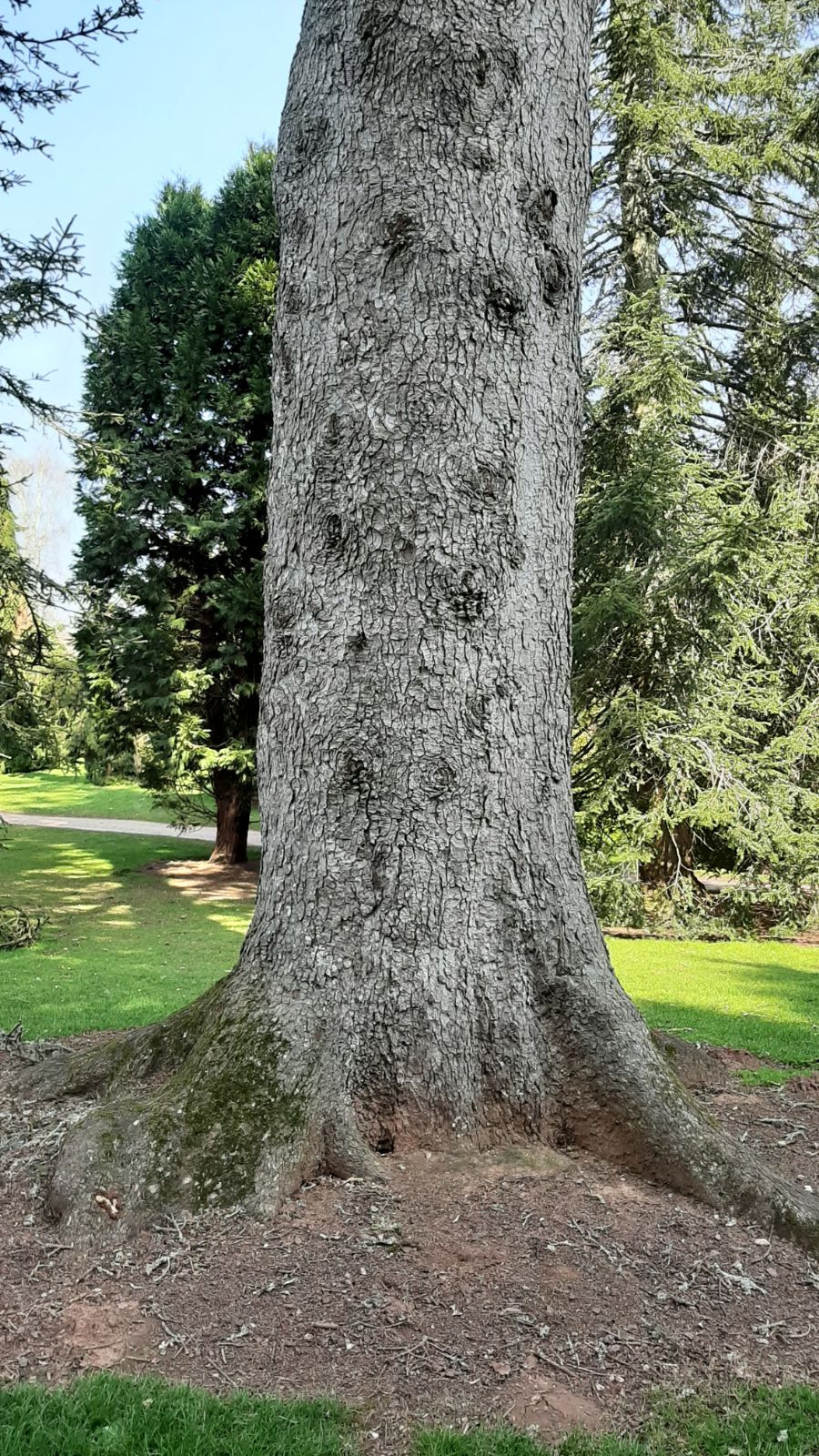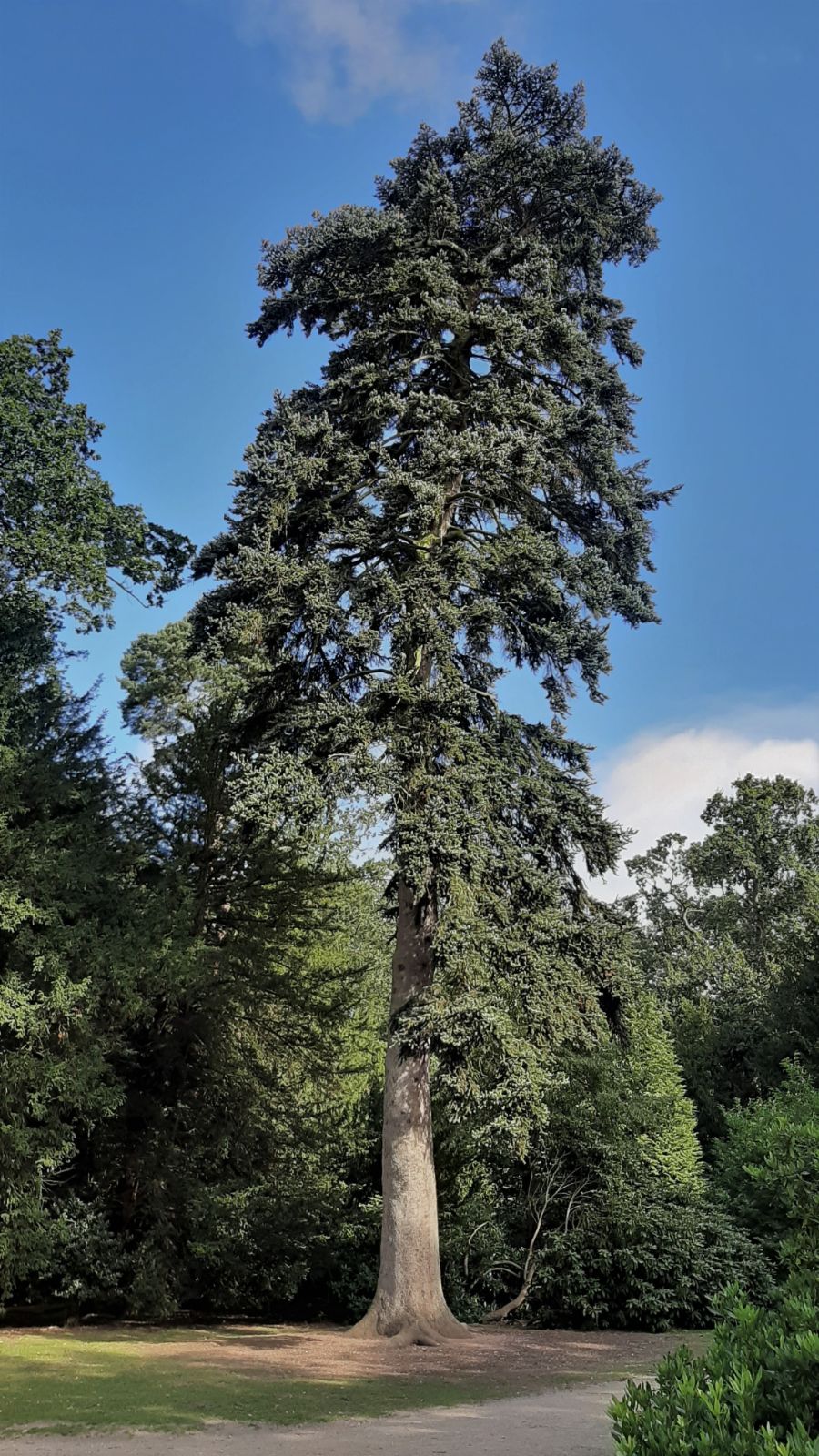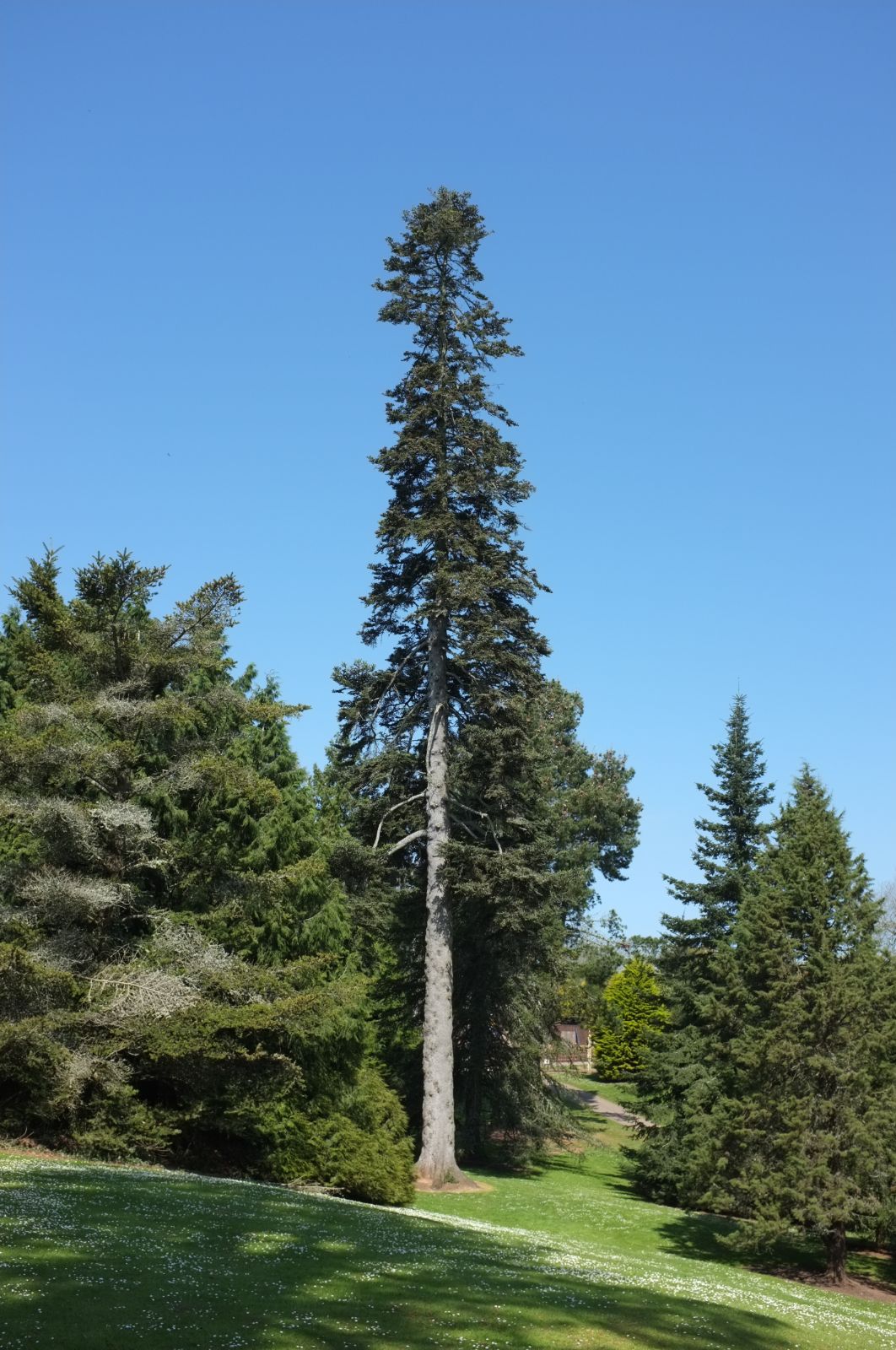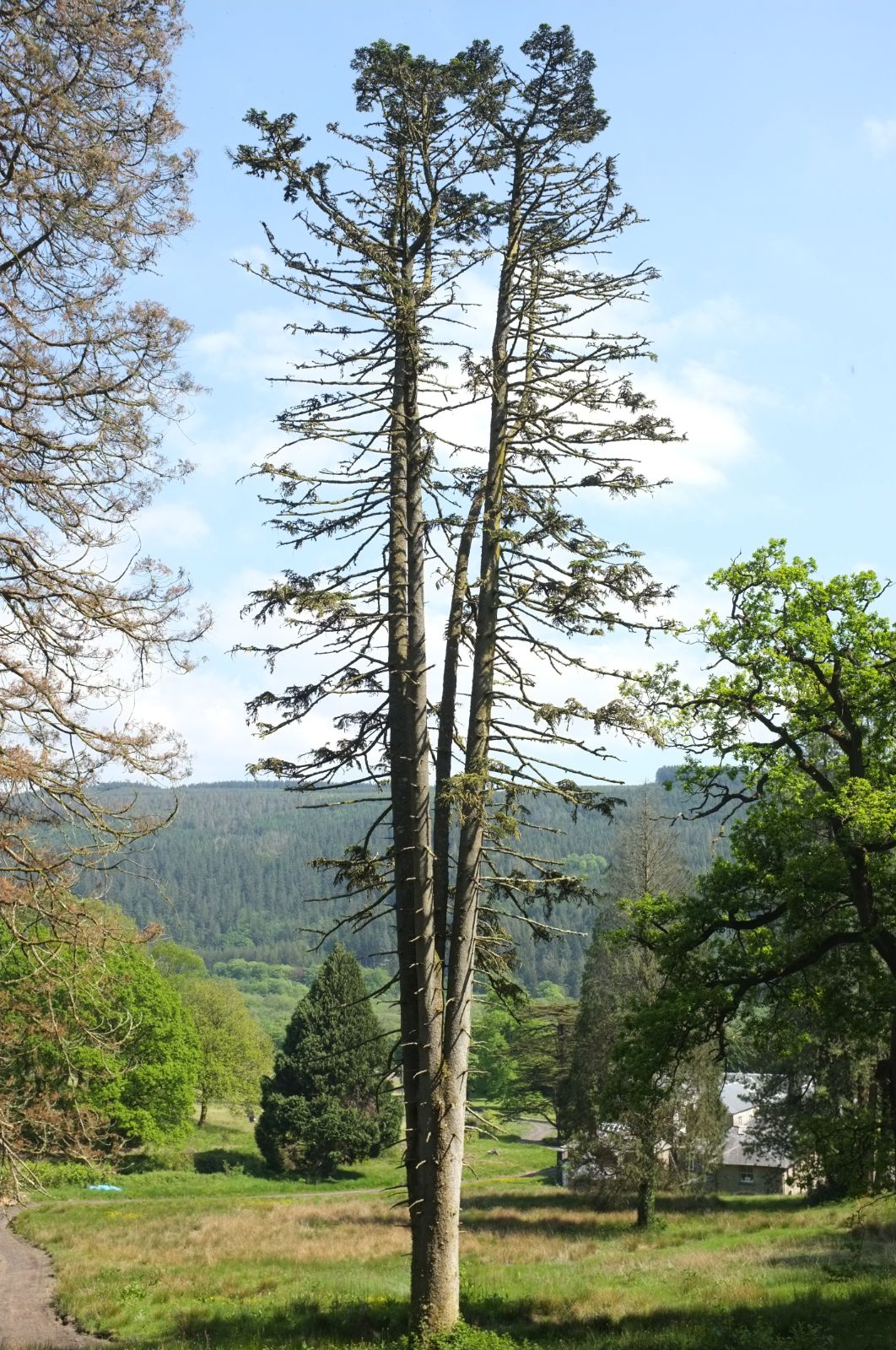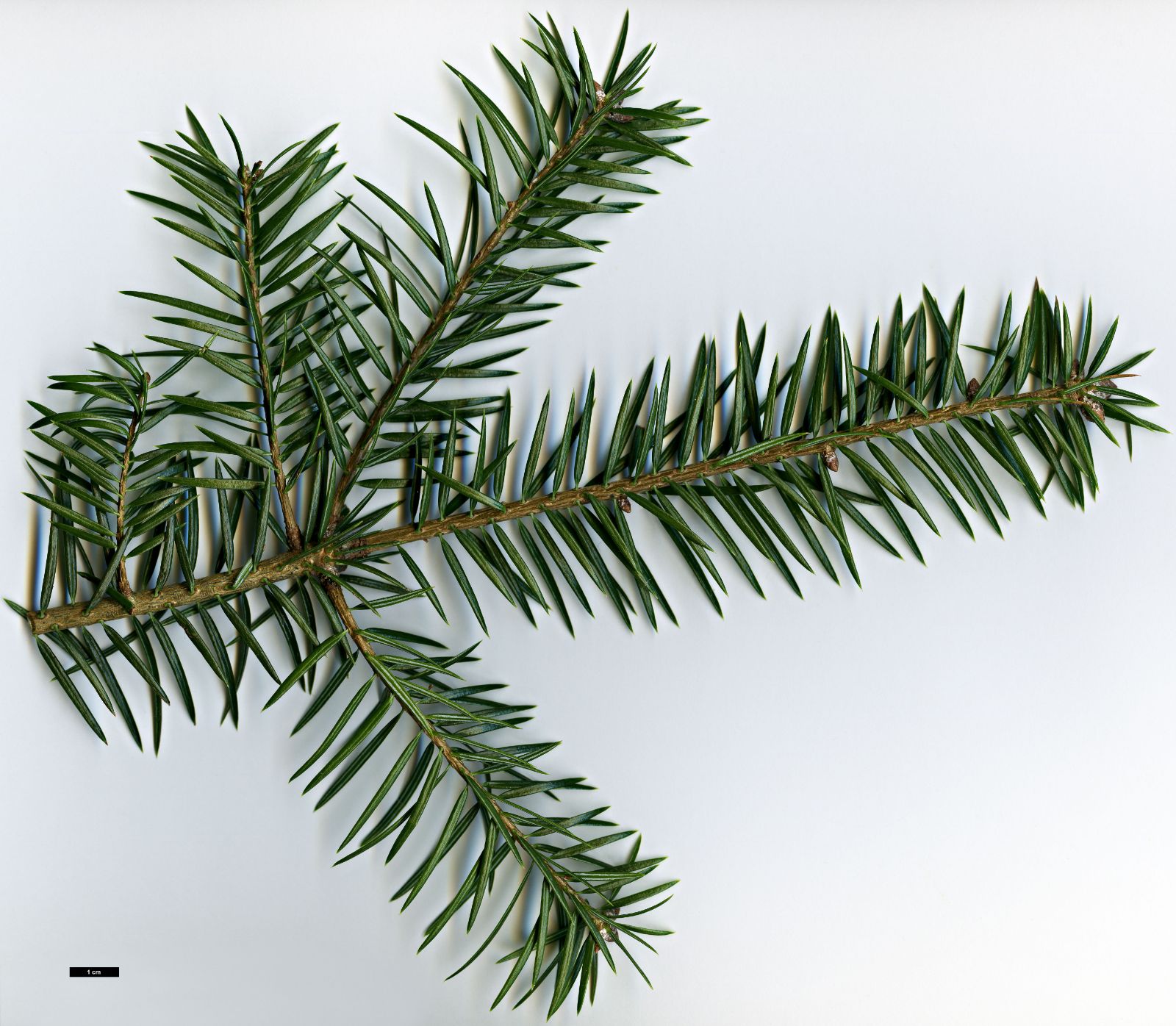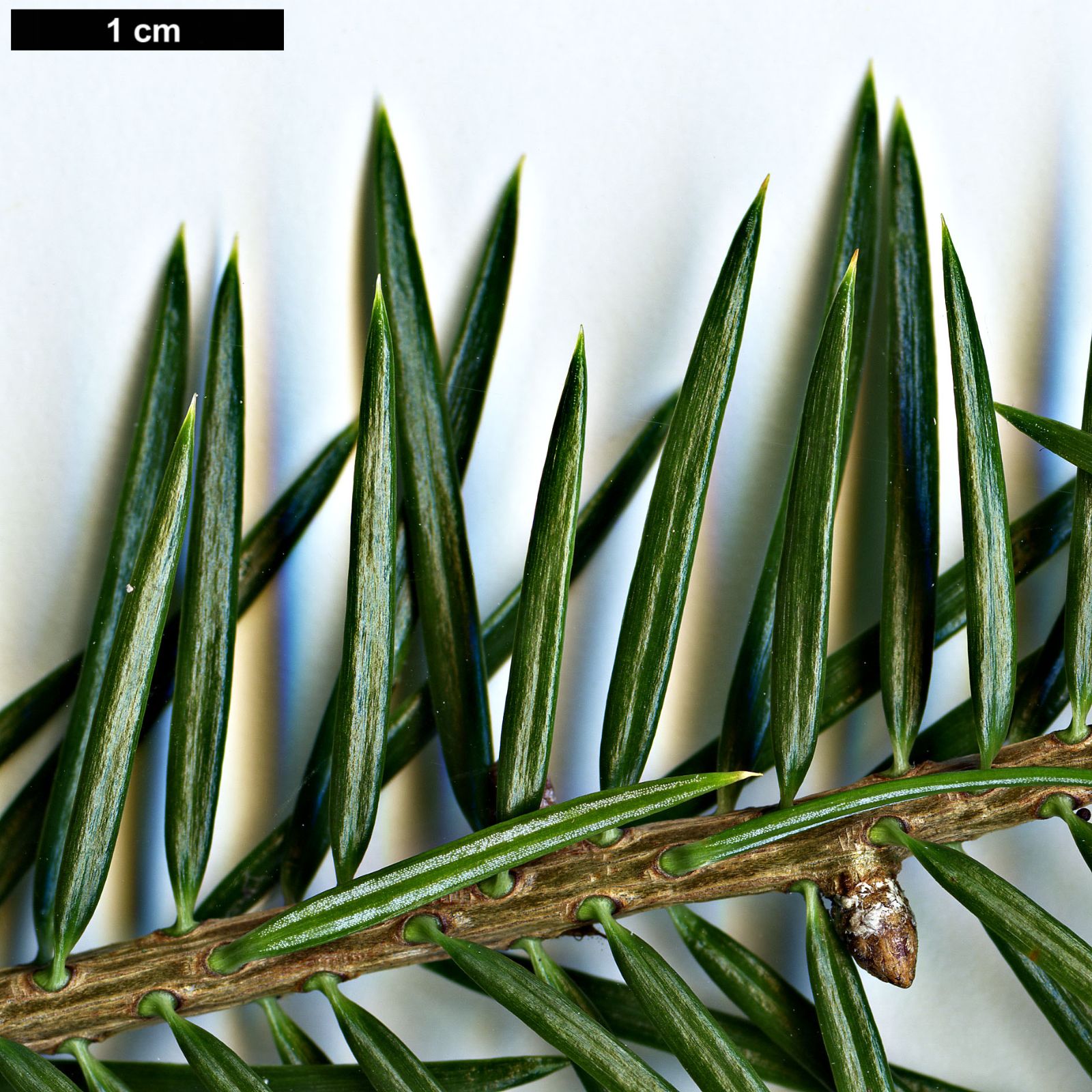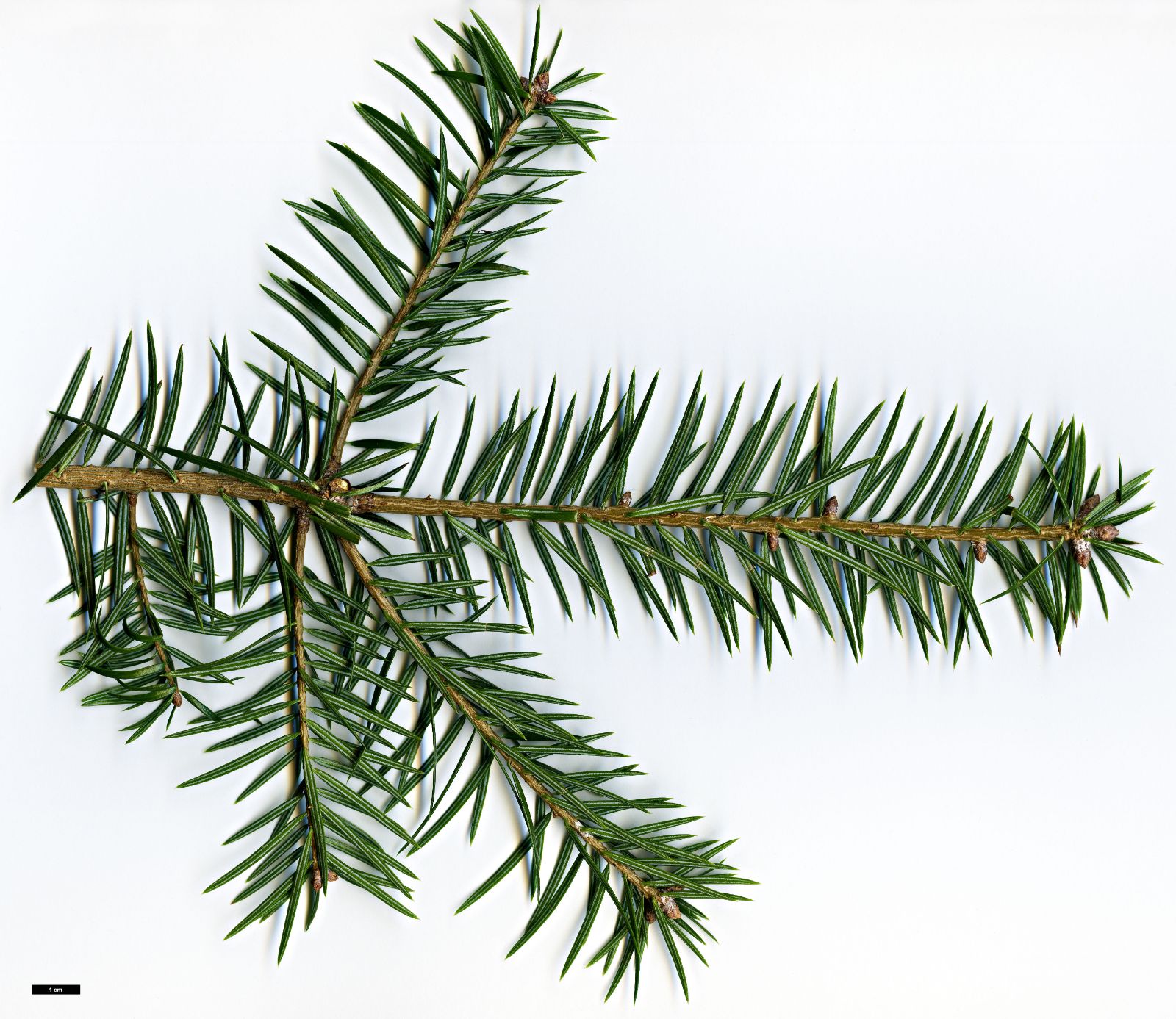Abies cephalonica
Sponsor
Kindly sponsored by
Sir Henry Angest
Credits
Tom Christian (2021)
Recommended citation
Christian, T. (2021), 'Abies cephalonica' from the website Trees and Shrubs Online (treesandshrubsonline.
Genus
Common Names
- Greek Fir
- Grecian Fir
- Kukunaria
- Sapin de Céphalonie
- Grieschische tanne
Synonyms
- Abies alba var. cephalonica (Loudon) Richt.
- Abies cephalonica var. apollinis (Link) Beissn.
- Abies cephalonica var. graeca (Fraas) Liu [in part]
Infraspecifics
Other taxa in genus
- Abies alba
- Abies amabilis
- Abies × arnoldiana
- Abies balsamea
- Abies beshanzuensis
- Abies borisii-regis
- Abies bracteata
- Abies × chengii
- Abies chensiensis
- Abies cilicica
- Abies colimensis
- Abies concolor
- Abies delavayi
- Abies densa
- Abies durangensis
- Abies ernestii
- Abies fabri
- Abies fanjingshanensis
- Abies fansipanensis
- Abies fargesii
- Abies ferreana
- Abies firma
- Abies flinckii
- Abies fordei
- Abies forrestii
- Abies forrestii agg. × homolepis
- Abies fraseri
- Abies gamblei
- Abies georgei
- Abies gracilis
- Abies grandis
- Abies guatemalensis
- Abies hickelii
- Abies holophylla
- Abies homolepis
- Abies in Mexico and Mesoamerica
- Abies in the Sino-Himalaya
- Abies × insignis
- Abies kawakamii
- Abies koreana
- Abies koreana Hybrids
- Abies lasiocarpa
- Abies magnifica
- Abies mariesii
- Abies nebrodensis
- Abies nephrolepis
- Abies nordmanniana
- Abies nukiangensis
- Abies numidica
- Abies pindrow
- Abies pinsapo
- Abies procera
- Abies recurvata
- Abies religiosa
- Abies sachalinensis
- Abies salouenensis
- Abies sibirica
- Abies spectabilis
- Abies squamata
- Abies × umbellata
- Abies veitchii
- Abies vejarii
- Abies × vilmorinii
- Abies yuanbaoshanensis
- Abies ziyuanensis
Tree 40–45 m tall, 1.5–2 m dbh. Crown pyramidal at first, becoming columnar, somewhat irregular and flat-topped in maturity. Bark of young trees pinkish- or brownish-grey, smooth for many years, later breaking into quite small, irregular, hard plates, maturing grey. First order branches long, spreading horizontally with age, somewhat pendant in the lower half of the tree. Branchlets stout, slender in shade, shining pale yellow to yellowish- or reddish-brown with prominent grooves at first, later smooth, glabrous. Vegetative buds ovoid or conical, c. 6 × 4–5 mm with yellowish resin. Leaves spreading radially, somewhat pectinate or parted to form a ‘V’ below the shoots, curved, slightly forwards, 1.5–3.5 cm × 2–2.5 mm, twisted or curved at base, apex acute, rarely obtuse, glossy dark green above, with two greenish-white stomatal bands below. Pollen cones crowded, 1.2–1.8 cm long, yellow with red microsporophylls. Seed cones narrowly cylindrical, 10–16(–20) × 3.5–5 cm, apex obtuse or papilliform, yellowish-green at first, maturing to pale reddish-brown; seed scales cyanthiform, 2.5–3.5 × 2–3 cm at mid-cone; bracts exserted and recurved at maturity, the exposed part triangular with a long cusp. (Farjon 2017; Debreczy & Rácz 2011).
Distribution Greece Cephalonia, Euboea, Sterea, Hellas, Peloponnisos
Habitat In high mountains, (600–)800–2000(–2100) m asl usually on rocky, well drained, calcareous soils, associating with Fagus orientalis and Quercus spp. at lower elevations, usually forming pure forests or associating with Juniperus oxycedrus at higher elevations.
USDA Hardiness Zone 5-7
RHS Hardiness Rating H6
Conservation status Least concern (LC)
Taxonomic note There is evidence of ‘past and perhaps present’ introgression of Abies alba into A. cephalonica populations in the northern part of the latter’s range, and there ‘appears to be a north-south cline of character states’ with pure A. cephalonica restricted to southern populations in Cephalonia, Euboea and the southernmost Peloponnese (Farjon 2017). These two species have, in the past, given rise to the stable, true-breeding hybrid treated here as A. borisii-regis, but not all intermediate material should be assigned to that taxon as a matter of course. The Apollo Fir, A. cephalonica var. apollinis, was initially described at species rank from Mount Parnassus based on minor foliar characters (Bean 1976). It has long been considered to fall within the variability of the species (Farjon 2017; Debreczy & Rácz 2011). In his monograph, Liu (1971) recognised the Apollo Fir, and included western Anatolian populations previously referred to A. equi-trojani within it. These Anatolian populations are distinct from A. cephalonica and are discussed here under A. nordmanniana subsp. equi-trojani.
When Loudon described Abies cephalonica in his Pinetum et Fruticetum Britannicum (Loudon 1838) the species had already been in cultivation in Britain for fourteen years, after General Sir Charles Napier sent a small quantity of seed from Cephalonia in 1824. The first plants were raised at Luscombe Castle, Devon, and subsequently distributed to various gardens. These were followed ‘some time afterwards’ when a Mr Charlwood received ‘a cask of cones’ from General Napier (Elwes & Henry 1906–1913). This second, much larger consignment yielded the first plants commercially available in Britain. It could also have been the source of the first trees grown in North America, where the species arrived sometime before 1850 (Jacobson 1996), and also perhaps the source of early trees in many European arboreta.
Greek Fir was quickly found to be vigorous, hardy, and otherwise relatively tough in gardens, its only significant encumbrance being its susceptibility to damage by late frosts on account of it being one of the earliest firs to flush into new growth in the spring. Within a few years the oldest trees were producing viable seed, and soon many garden-origin plants were raised and peppered through collections to supplement the originals (Elwes & Henry 1906–1913). Knowing now the ease with which A. cephalonica hybridises with its close relatives, it is surprising that older trees in collections do not exhibit greater degrees of variation in their gross morphology.
Genuine Greek Firs are, overall, quite distinctive. Their needles are hard and radiating, somewhat like those of A. pinsapo and A. numidica but longer than both, less densely set on the shoots, more forward in their arrangement, and tending to have a more acute apex. The vegetative buds are different too, noticeably larger in Greek Fir. The shoots themselves are stout, maturing glossy pale brown. Alan Mitchell said of Greek Firs ‘everything about this tree is sturdy, spiky and hard’ (Mitchell 1996) and as he demonstrates this is true of their overall habit as well as individual shoots and needles. Young trees soon develop well-spaced whorls of branches which ascend at 45 degrees to the stem, and while the crown soon becomes quite dense, its rigidity and ‘spiky’ nature remains a helpful character. Returning to the question of frost damage, it is usually the lower lateral branches which flush first, then the upper branches, and finally the all-important leading shoot, and so it is these parts of young plants that are at greatest risk, in that order. This is why many older trees have a somewhat scraggy appearance in their lower crowns, and indeed why several develop secondary leaders from low in the crown (Mitchell 1996). The obvious answer is to site young trees carefully, in areas with good frost drainage.
Greek Fir has been widely grown throughout mainland Europe for as long as it has been grown in Britain. There are examples in arboreta in many if not most European countries, including Italy, Slovakia, Germany, Belgium, and the Netherlands (monumentaltrees.com). The tallest on record is a tree at Bodnant, north Wales, which was 43.5 m in 2016. Another, at Bicton Park Botanical Gardens in Devon, has made an elegant narrow spire with no secondary leaders developing; in 2019 it was 42 m tall (Tree Register 2020). Greek Fir was introduced to North America during or before 1850 where, as in Europe, it was found to combine ‘hardiness, drought tolerance, and insect resistance’ (Jacobson 1996), though it would remain quite rare here for some time. Writing for the 1931 RHS conifer conference, Arthur Slavin gave a North American view of A. cephalonica ‘it is one of the most valuable firs we possess. It is now offered in the trade in limited quantities’ (Slavin 1932). Records from the Arnold Arboretum suggest a slower rate of growth in this markedly continental climate. Warren and Johnson cited three extant trees in the late 1980s ‘103, 88, and 33 years old and…23 m, 22m, and 13 m in height’ (Warren & Johnson 1988), slower than would be expected in a conducive spot in the UK or Ireland.
In North America, as elsewhere, Greek Fir is becoming less frequently planted nowadays. In common with most of the Mediterranean basin firs, A. cephalonica hybridises freely with its near relatives and material grown from garden-origin seed is likely to be hybridised. Several plantings at the Yorkshire Arboretum, UK, of stock obtained from commercial nurseries in the 1970s, are remarkable for the degree of variation they exhibit. In a single batch are plants that correspond quite closely to A. cephalonica, while some appear to be near-pure A. alba (pers. obs. July 2020). Hybrid swarms like this are to be expected when trees are raised from open-pollinated seeds gathered in collections.
Nowadays home-grown seed is rightly eschewed, but obtaining genuine seed from native populations in the southern parts of its range (necessary to ensure purity) is difficult. Small scale collecting by Botanic Gardens still takes place, however, for example seed from the Athenian Peninsula and adjacent Euboea was sent to the Royal Botanic Garden Edinburgh and Bedgebury Pinetum in 2007. Material raised from these collections was distributed by both institutions in the early 2010s to multiple collections in the UK and Ireland, including to Benmore and Dawyck Botanic Gardens, Mount Stuart and Scone Palace in Scotland, to Harcourt, Westonbirt, and Eastnor Castle in England, and to Kilmacurragh in Ireland (BG-BASE data 2020).
'Aurea'
An old cultivar introduced by Sénéclauze before 1867, making a small upright tree with leaves golden-yellow when young. Nowadays “very rarely seen” according to Auders & Spicer (2012). ‘Barabits Gold’, raised in Hungary in 1965, has probably superseded it.
'Greg's Broom'
Synonyms / alternative names
Abies cephalonica 'Hunnewell'
Abies cephalonica 'Hunnewell WB'
Abies cephalonica 'Greg Williams'
Abies cilicica 'Greg's Broom'
A relatively extensive synonymy betrays the confusion that surrounds this selection, usually given under A. cephalonica but believed by Auders & Spicer (2012) to belong to A. cilicica. Their illustrations offer no resolution, but in having to come down on one side of the fence or other, A. cephalonica prevails here. It forms a dimunitive spreading bush of up to 25 × 50 cm in ten years.
'Meyer's Dwarf'
The only widely grown A. cephalonica cultivar, its origin is unknown but it was well distributed throughout European collections by 1963. It forms a flat-topped, low growing shrub of dense growth, significantly wider than tall, to 0.5 × 1.5 m in ten years. The leaves are shorter than is typical for the species (Auders & Spicer 2012).
'Minityp'
A selection first listed by Edwin Smits Nursery, the Netherlands, in 2009, making a dense pyramidal dwarf (Hatch 2018–2020). The illustration and description given by Auders & Spicer (2012, p. 43) appears to be an error, for it bears little resemblance to the plant illustrated elsewhere, e.g. at edwinsmitsconifers.com.
'Pendula'
This name is listed in Aris Auders and Derek Spicer’s great work on conifer cultivars (Auders & Spicer 2012) which suggests it was “Listed by J.D. zu Jeddeloh Nursery, Germany in 2003” but the accompanying photograph (p. 42) shows a plant clearly identifiable as A. numidica ‘Pendula’. It remains to be seen whether this error was on the part of the nursery, or the authors. It is a great pity that this otherwise superb work contains a relatively high proportion of obviously incorrect photographs. In this case it is telling that Hatch (Hatch 2021–2022) lists no such name under Greek Fir; so far as may be gleaned from internet searches, no such selection exists that would merit such a name.
'Rubiginosa'
An old cultivar raised in France before 1867, the first flush of foliage appearing rubiginous (Auders & Spicer 2012) before maturing typical green. The same character has been observed in seed raised plants of this and other species, but the strength of colouration varies from year to year and is not worth naming (pers. obs.).
'Submutica'
This name is included here not because any such plant exists, but to illustrate the dangers of blindly believing labels. Larry Hatch lists this cultivar in his monumental guide to woody plants with the following description: “female strobili more cylindrical and shorter (10–12cm long vs. species 12–18cm), apex more obtuse, bracts included (not exerted as species typical)” (Hatch 2021–2022). This should tell anybody familiar with firs that whatever ‘Submutica’ is, A. cephalonica it is not!


